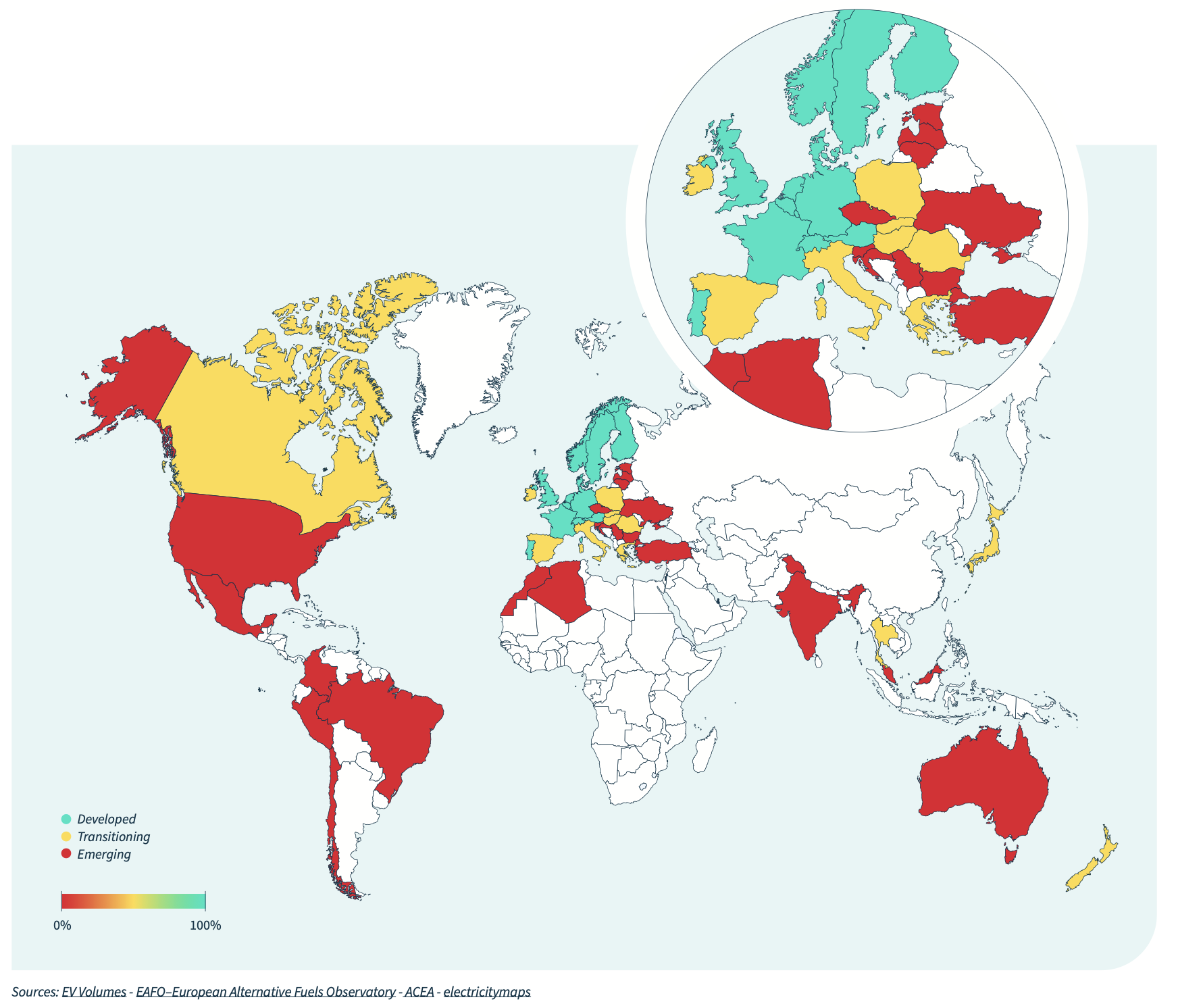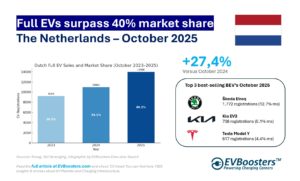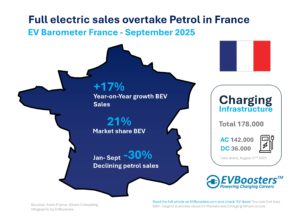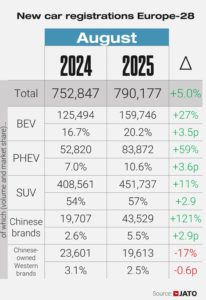EV Maturity Across the Globe
This year’s guide scores a total of 47 countries based on their EV maturity, categorised into three levels: Developed, Transitioning, and Emerging. The scoring methodology, which provides an overall country maturity score on a scale from 0 to 100, addresses six core factors: EV adoption, charging infrastructure, taxation and regulation, green powertrain offering, sustainability relevance, and BEV-TCO parity vs. internal combustion engine (ICE) model comparison.
Leading the Charge: Western and Northern Europe
Western and Northern Europe are at the forefront of electric vehicle adoption. Norway, the Netherlands, and Finland are the most advanced countries, with scores of 82/100, 80/100, and 74/100 respectively. Thirteen European countries fall into the “Developed” category, up from eleven in 2023, indicating broader EV adoption and a wider range of available EV powertrains. The increase is driven by favourable conditions and an expanding selection of EV models.
New geographical areas, including Southern and Eastern Europe and Thailand, are also contributing to the growth of the electric vehicle market, thanks to increased adoption and developing charging infrastructure.
Diverse EV Models and Expanding Charging Infrastructure
The report highlights that 20 countries now offer more than 100 different BEV models. The EV market has seen a significant increase in the number of models available, spanning a wider range of segments for both passenger cars and light commercial vehicles. This diversification caters to a broader customer base with varying needs and budgets.
Charging infrastructure continues to expand, with notable improvements in Austria, Denmark, and Switzerland. However, countries like Australia, Ireland, and Poland face challenges in keeping up with the rapid adoption of EVs due to slower infrastructure development. The European Alternative Fuels Infrastructure Regulation (AFIR) has been a key driver in the expansion of charging infrastructures, mandating member states to install charging points at regular intervals on major highways.
Challenges and Market Dynamics
The guide also addresses the challenges facing the EV market, such as price volatility, evolving total cost of ownership (TCO), geopolitical trade tensions, fragmented and changing regulations, and shifts in subsidies and taxation rules. These factors continue to shape the EV ecosystem and influence the pace of adoption.
One significant finding is the reversal of the BEV TCO downward trend in some EU markets from 2023 onwards. While BEV TCO remains more competitive in 13 European countries, overall competitiveness has deteriorated in some markets compared to ICE vehicles. Factors such as the end of governmental subsidies or increases in energy costs have contributed to this trend in France, Sweden, and Spain. Conversely, in the UK and Austria, BEV TCO has returned to simple parity.
A Nuanced Approach to Electrification
Annie Pin, Chief Commercial Officer at Ayvens, emphasises the importance of a nuanced and holistic approach to the transition to sustainable mobility. “The transition to electrification should and will happen, but it will take time and it will not be a linear journey,” she notes. The Ayvens Mobility Guide aims to provide the insights and solutions fleet managers need to make informed decisions and achieve a successful transition to more sustainable mobility.
Conclusion
The 2024 Ayvens Mobility Guide offers valuable insights into the state of global electrification, highlighting both progress and ongoing challenges. With detailed analysis and comprehensive scoring, the guide serves as an essential tool for fleet managers aiming to navigate the complexities of the EV market and develop effective strategies for a sustainable future. As the electric mobility landscape continues to evolve, resources like the Ayvens Mobility Guide are crucial in driving the transition towards greener and more efficient transportation solutions.
Source: Ayvens







